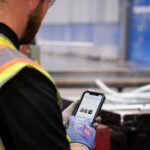That things have irrevocably changed in the world of work operations and resourcing is sinking into the corporate mindset. This era of talent shortages and the ‘candidate market’, brings unprecedented challenges, as organisations endeavour to become accustomed to hybrid working, treating talent as valuable consumers and the Great Resignation. It is focusing the minds of business leaders, who need to be alert to and prepared for what is happening within the workforce and the shifts that are in progress.
All that is happening is not just specifically about hybrid working – that is simply an organisation issue that requires a rethink on real estate, resource structure, technical and policy solutions – what is really the crux of this seismic transition, is the desire for greater flexibility and here lies a dichotomy of views, opinion and expectation. In the simplest of terms, it is change in the core essence of how, when and where people work and that cannot be taken lightly, as it displaces the whole traditional world of work framework that robustly and rigidly served generations. One reality remains true – and isn’t looking likely to change – is that good talent is hard to come by. High vacancy figures and low unemployment cause an imbalance of readily available talent. Nevertheless, while acknowledging the status quo, organisations blithely continue to invest large chunks of recruitment spend and interview hours, in the resource and budget-sapping quest for new talent to join the firm, rather than consider and develop those already within. In these money strapped times, it seems most obtuse to continue an all-too often fruitless pattern to fill vacancies, rather than looking at budding talent inside the organisation, who will quite quickly recognise that they are being overlooked. Indeed, the pursuit of the right skills, at the right time, is today the equivalent of a fishing competition in a lake with barely any fish. So, the reality is that organisations with a culture of identifying and developing talent within – those with track records and institutional knowledge and the desire to grow and develop within the company – have a massive advantage over competitors that do not. What this suggests is that, despite all the information accrued about employees, for some businesses, there is neither the confidence in nor access to information about those that have the potential to take on a more senior role or take a move sideways. Surely the answer to the worldwide talent scarcity problem is to be found in those already within the firm?
Now is the time to attend to the employee voice and tap into the people’s ambitions. Retaining through development has to be the way forward and that means surfacing internal candidates for the vacant role and, if possible, running comparisons on internal and external candidates. Succession planning and management are of course nothing new, but what they represent has changed significantly, because the traditional, “job for life”, is practically extinct. Amazingly, this highly-mobile and sophisticated information is still spreadsheet-based for some and lacking in essential real-time change and up-to-date data to call upon, so relevant and valuable for decision-making information. In the cut and thrust of operating, such broad brush processes can easily put people in boxes, where hopes and ambitions slowly fade, leading to heightened attrition. Allowing employee voice to disappear into the background is a dereliction. It’s been said a million times, but things are changing and changing rapidly, even for organisations that have already invested in succession planning tools that combine assessment results and ratings with individual ambitions and skills and matches these with the roles at risk or in need of a successor. So, for those without such capability, the writing is on the wall. Employees that may have previously sought to climb the career ladder or acquire experience through a sideway moves into a new department, may be rethinking their next steps. Flexibility has become the watchword for and the capability to ‘work from anywhere’ is becoming almost a right.
The Results Only Work Environment – ROWE for short – with its focus on outcomes and deliverables rather than ‘time worked’, has sealed its place in HR management strategy. For some, having greater flexibility and autonomy is a far bigger influencer on career and job choice. For others, there may be a drive to move location and for others still, their motivation is for job security and stability in these uncertain times. Regardless, the result of the changes is the same, HR leaders can no longer be certain that they know who in the talent pool is ready and willing to move up. Even the best data can only go so far. What is required is good, old-fashioned and regular two-way conversation, which imbues data with much richer and deeper insight about what people want from their experience of work and how it integrates with their life outside of it. These conversations – between employees and their line managers needs to take a simple – understanding of ambitions and align them with business resourcing needs, an outlay of a plan and roadmap. This plan in itself has to be agile, not set in stone, because ambitions and expectations shift more rapidly now than they ever have. Equally important, employees must feel that they are in control. Add into the conversation mix an updated skills and competence profile which should reveal any hidden strengths not yet being used, or untapped abilities that can be leveraged. This will enable future-focused skills and competences to become better articulated and understood.
To remain competitive, organisations will need a workforce and leadership bench which is agile, curious about future possibilities and has a willingness to learn, develop and reskill. The conversation must underpin all engagement and retention initiatives, aimed at helping employees navigate their movement into new positions. It’s important to run this at all levels and departments, not just leadership level and authenticity depends upon honesty and transparency and a culture of support, to enable employees to take control of their own career destiny, rather than follow an organisational-driven roadmap. There should be a clear path along which they can progress, acquiring experience and skills on the job and the freedom to decide which route to take. For many HR leaders, this shift to individual ownership of careers has long been sought-after, but few have had the time, tools or headspace to put this into action. However, now it’s business-critical and the direction of travel is irresistible and the tools that demonstrating sophisticated capability, showcasing established routes for careers as well as flagging new and not-yet[1]thought-about career paths is a game changer. They highlight the competences needed and, when combined with individual assessments of current skills, outline what needs to happen to acquire and develop those competences.
Jobs will change, jobs will go, jobs will be created, hard-to-fill jobs will stay hard to fill and new skills will be needed. So, organisations that give talent the time, space and resources to reflect and decide on their next steps will be the ones that prepare usefully mobile people, retain them for the future and build capability within, including for those hard-to-fill roles. Retaining talent is stabilising as it shows a future of possibilities, bolsters retention plans, encourages career engagement and fosters a more open dialogue. For years, HR leaders have championed the need for a more individually-driven employee proposition and to learn from our consumer marketing colleagues the lessons of segmentation and tailoring of message. So perhaps now is the time to bring this to the fore, in order to understand what engages key talent segments, rather than the vanilla approach so often adopted. With candidates often holding the ace card, internal mobility is essential to retention and internal development can meet the changing ambitions of employees, reduce the expense and energy needed for recruitment and bring focus to developing a future-fit workforce.
FOR FURTHER INFO HEAD-LIGHT.CO.UK
Sign up for a Platinum Subscription where you will receive the publication both in print and digitally for only £175 pa (£250 pa overseas)
12 x print & digital issues pa
All back issues
Invitations to our events
PLUS you will receive:
‘The GC Index®’ profile to measure your business impact worth £100
HR business book of the month
25% of fee donated to the ‘Hope for Justice’.
We guarantee:
‘No paid for’ editorial
56 pages each month
75% / 25% editorial ratio
Topical features, interviews & case studies









